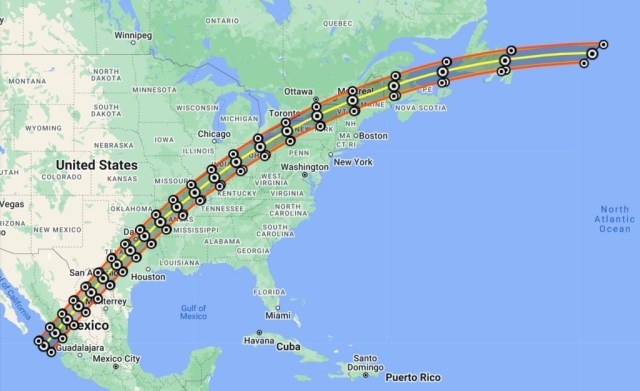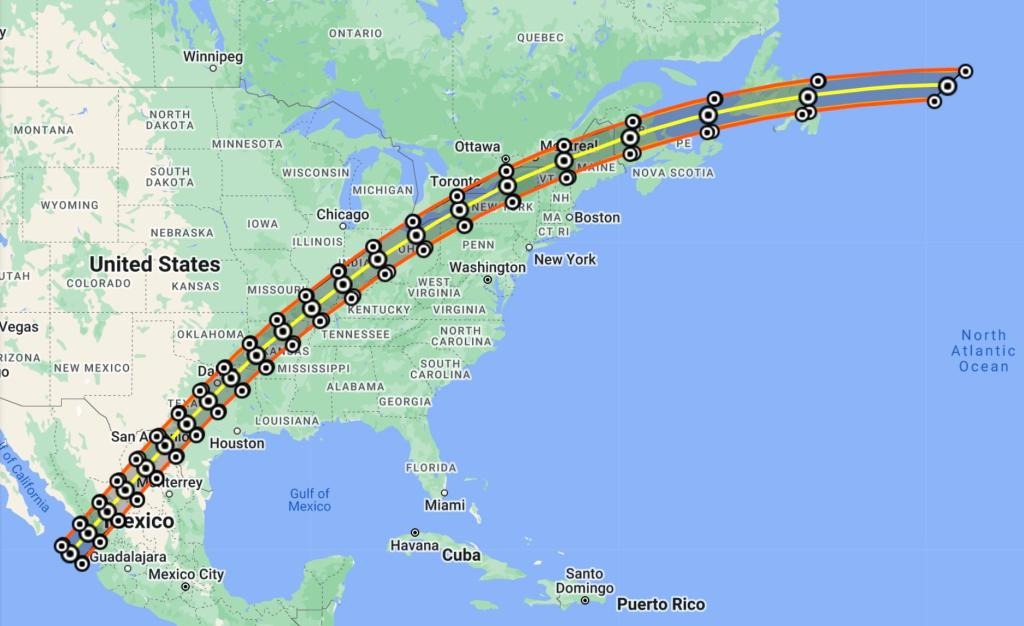
Chances of seeing the eclipse on Monday may be reduced.
A new calculation by John Irwin, master of eclipse calculations, suggests that the total path of a solar eclipse (where the Moon completely covers the Sun) is actually 600 yards shorter than NASA's official predictions.
This means that if you plan to view the eclipse from a location on the edge of the path of totality, you may have an even narrower window.
Some places will be completely lost.
According to this new data, places expected to see the total eclipse for a few seconds, such as Rome, New York; Effingham, Illinois; and Montreal's Cité Jardin park, now outside the zone.
Forbes first reported the transition to a 115-mile-wide, 9,200-mile-long track.
A NASA scientist confirmed that the long-standing official map may not be entirely accurate, and suggested traveling a mile toward the area to ensure the moon completely covers the sun.
Cause of Controversy: Differences of opinion about the size of the Sun.
“Calculations that use a slightly larger radius for the size of the Sun make the ecliptic path a little shorter,” Dr. Michael Kirk, a research scientist in the Space Flight Center's Heliophysics Sciences Division, told Thrillist on Wednesday. NASA's Goddard.
read more New York Post





:quality(85)/cloudfront-us-east-1.images.arcpublishing.com/infobae/KTKFKR763RBZ5BDQZJ36S5QUHM.jpg)